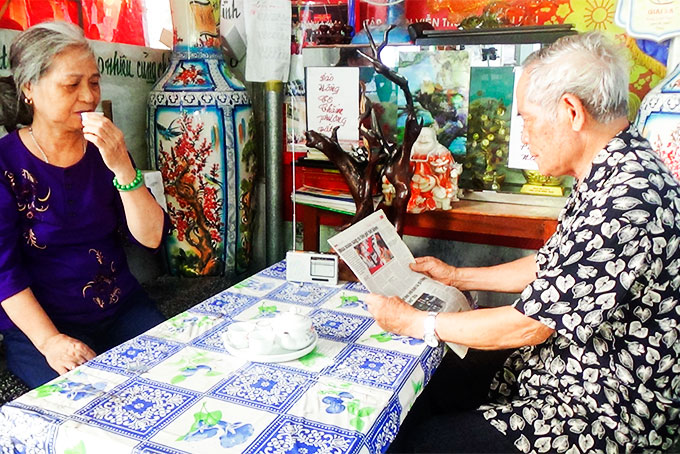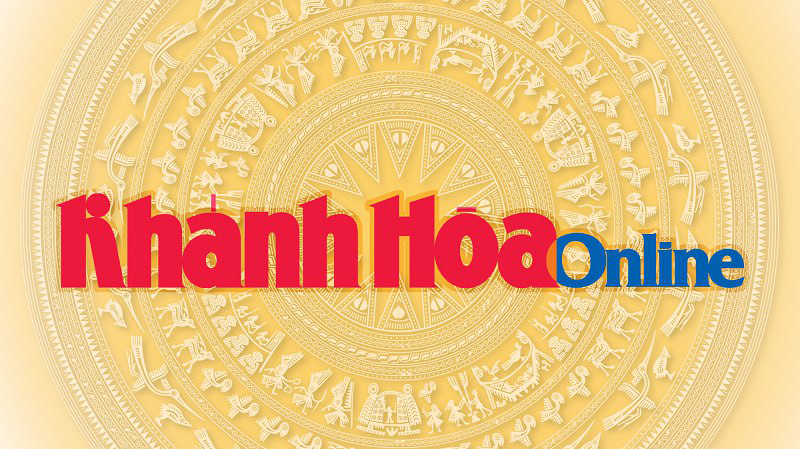
Khanh Vinh District has a population of approximately 38,000, seventy-six percent of whom are ethnic minority people. Ethnic minority communities in the remote disadvantaged mountainous district are still heavily affected by a low intellectual level and backward customs...
Khanh Vinh District has a population of approximately 38,000, seventy-six percent of whom are ethnic minority people. Ethnic minority communities in the remote disadvantaged mountainous district are still heavily affected by a low intellectual level and backward customs.
The Village Elder Cao Sung in Hon Du Village, Khanh Nam Commune always gets up at 5am every day when the communal radio broadcast starts with a melody of the central highlands. While listening to news, he makes tea and puts some essentials into his rattan basket to prepare for his work on the mountain field afterwards.
 Nguyen Xuan Tu and his wife, Khanh Vinh Town, often listen to radio and read newspaper every morning. Nguyen Xuan Tu and his wife, Khanh Vinh Town, often listen to radio and read newspaper every morning.
|
Cao Sung says, “We get much information from the local, provincial and central television and radio stations. Laws and polices have been effectively publicized. For example, we get inspired by campaigns on environmental protection; and saying no to littering and plastic use. We have joined effort to mobilize others to follow the good deeds. Besides, we get informed of the policy on safe cultivation of green skin pomelo. Other policies and information about vaccination, environmental clean-up, charities, etc have been also well propagandized via communal radio broadcasts."
Pi Nang Liem, Ba Dui Village, Khanh Binh Commune regards his radio as his best friend. “I bring it everywhere I go as I can get a lot of information and knowledge from it."
In order to improve ethnic minorities’ access to information, over the years, Khanh Vinh District Television & Radio, presently merged with the Center of Culture & Sports to become a part of Khanh Vinh Center of Culture, Information and Sports, has been invested by the State and the province to give broadcasts of 4 channels: VTV1, VTV2, VTV3 and KTV.
The grassroots radio stations have been invested and equipped with digital transmitters with wireless speakers so people can listen to daily news on communal loudspeakers or on their own radios. In addition, the Internet has covered the entire district, so people can watch cable television via digital receivers or read online newspapers. Currently, about 80% of homes have been equipped with televisions and radios. 100% of people have had access to radio and television programs. Newspapers can be bought at the district post office or read at commune cultural post offices or public libraries.
Newspapers and other publications have reached local people through many channels. People have grasped the Party’s guidelines and the State, policies and laws; and get local and international news easily. Thanks to the press, the ethnic minority people can get informed about many aspects of life, broaden their minds, improve scientific and technical knowledge, and learn a lot from good deeds. The press has also fulfilled its role of social criticism and public orientation as well as raised a good sense of legal responsibility.
“Today's information is very diversified, but sometimes confusing or even misleading. Therefore, I just like to listen to the Voice of Vietnam and read Khanh Hoa Newspaper as the sources of information are credible and accurate,” says Nguyen Xuan Tu from To 2, Khanh Vinh Town.
Currently, Khanh Vinh resident’s living standard has much improved and social order and security have been maintained thanks to great effort of the Party Committee and people in the district as well as the press’s contribution to changing behavior and raising public awareness. The press has provided a link and facilitated the Party’s guidelines and State’s laws to reach the public effectively, especially in remote and disadvantaged areas, confirms Mau Van Phi, Vice-Chairman of Khanh Vinh District People’s Committee.
K.O
Translated by N.T









